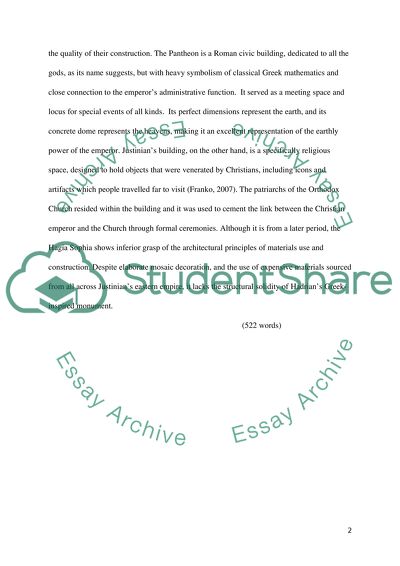Retrieved de https://studentshare.org/miscellaneous/1596345-based-off-art-history-the-differences-between-the-hadrians-pantheon-and-justinians-hagia-sophia
https://studentshare.org/miscellaneous/1596345-based-off-art-history-the-differences-between-the-hadrians-pantheon-and-justinians-hagia-sophia.


